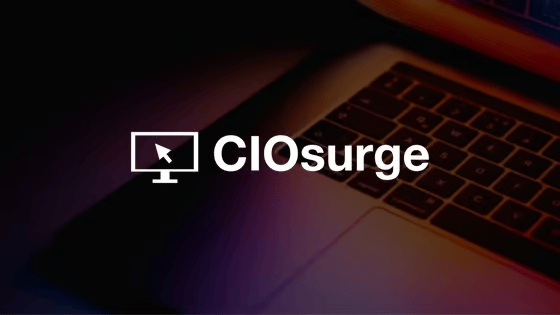- CIOsurge
- Posts
- 🛑 Under increasing pressure, how can CIOs convince CFOs to invest in AI?
🛑 Under increasing pressure, how can CIOs convince CFOs to invest in AI?
AI investments under scrutiny, AI Strategy Divides C-Suite, Cross-Domain IT Talent Trends


Powered by Single Fin
Welcome to this week’s edition of CIOsurge!
This week:
CIOs must justify AI investments with clear, short-term ROI to secure CFO buy-in, prioritizing quick wins, measurable outcomes, and financial impact to prevent funding cuts.
C-suite leaders remain divided on AI strategy, with tensions between innovation, responsibility, and regulatory uncertainty.
As IT evolves, cross-domain expertise is becoming essential, pushing CIOs to rethink hiring and talent development strategies.
Let’s make this week a game-changer.
Stay sharp. Stay ahead.
🛑 Under increasing pressure, how can CIOs convince CFOs to invest in AI?
CIOs are under increasing pressure to justify AI investments as CFOs demand clear, short-term ROI. A recent survey by Basware found that half of CFOs plan to cut AI funding if it doesn’t show measurable results within a year, despite 80% of organizations intending to increase AI spending.
The challenge? Many finance leaders lack a clear vision for AI implementation, and only a third of CIOs actively measure both revenue impact and time savings from AI initiatives. Meanwhile, businesses remain cautious, balancing AI’s benefits with its risks and costs—especially as high-profile failures, like Air Canada’s chatbot debacle, fuel skepticism.
For CIOs, the key to securing CFO buy-in is tying AI investments to strategic goals and prioritizing quick wins. Experts recommend focusing on areas where data quality is strong and success metrics—such as efficiency gains, cost reductions, or revenue increases—are well-defined. Testing projects through small-scale pilots can help validate AI’s value before full deployment.
To convince CFOs, CIOs must present AI outcomes in financial terms, demonstrate risk mitigation strategies, and clearly outline time-to-value. Without a structured approach, AI investments risk being cut before they have a chance to deliver meaningful impact.
- Zack Tembi
🤖 C-suite divided over AI responsibility and innovation
A new NTT Data report reveals deep divisions among C-suite leaders on AI strategy—one-third prioritize innovation, another third emphasize responsibility, and the rest aim for balance. While many acknowledge a significant gap between innovation and safety, regulatory uncertainty continues to stifle investment. With the U.S. pushing for deregulation and the EU tightening oversight, the path forward remains unclear.
AI adoption isn’t just about moving fast—it’s about moving smart. The tension between innovation and responsibility isn’t theoretical; it’s playing out in boardrooms as CIOs are asked to deploy AI at scale while mitigating security, compliance, and ethical risks. Without a clear governance framework, IT leaders are left navigating a regulatory patchwork that varies by region and changes unpredictably.
This means CIOs must take the lead in shaping responsible AI adoption internally. While governments and executives debate, IT teams need to establish robust AI risk management practices, ensuring that innovation doesn’t come at the expense of security and compliance. Waiting for regulation to catch up is not a strategy—it’s a liability.
- Zack Tembi
💬 Zack's Take

The Rise of Cross-Domain Expertise
As automation and AI reshape enterprise IT, the demand for talent with cross-domain expertise has skyrocketed. The days of hiring specialists for narrow roles—like a sole Microsoft Exchange admin—are fading. Today, businesses seek individuals who can bridge multiple disciplines, such as infrastructure, observability, and software development.
This shift is particularly critical for small and mid-sized organizations that can’t afford the deep specialization of larger enterprises. These companies often rely on “rising stars” who bring versatility and adaptability to their teams. Additionally, many are turning to third-party vendors to fill gaps in expertise for specific challenges.
CIOs must adjust their hiring and talent development strategies to align with this trend. Investing in upskilling and encouraging cross-functional collaboration can help existing employees broaden their skill sets, while strategic use of external consultants can complement in-house capabilities. This approach ensures that organizations stay competitive in an increasingly complex IT landscape.
🗞️ At A Glance

💡 CIO Spotlights
ECI Software names Brian Hildebrand as CIO
Brian Hildebrand, a longtime ECI leader, steps into the CIO role, bringing years of experience in IT strategy and cloud operations.
He will oversee ECI’s technology infrastructure, with a focus on security, reliability, and innovation to support SMB customers.
Hildebrand aims to drive ECI’s next phase of growth by advancing scalable cloud models and strengthening IT resilience.
Breakthru Beverage names Glenn Remoreras as CIO to drive digital growth
Glenn Remoreras joins Breakthru Beverage as CIO, bringing experience from Mark Anthony Group, Constellation Brands, and CEMEX.
He will lead IT strategy, focusing on AI, digital transformation, and omnichannel service to enhance operations.
CEO Tom Bené sees Remoreras as key to expanding digital capabilities and making Breakthru the easiest distributor to work with.





Reply